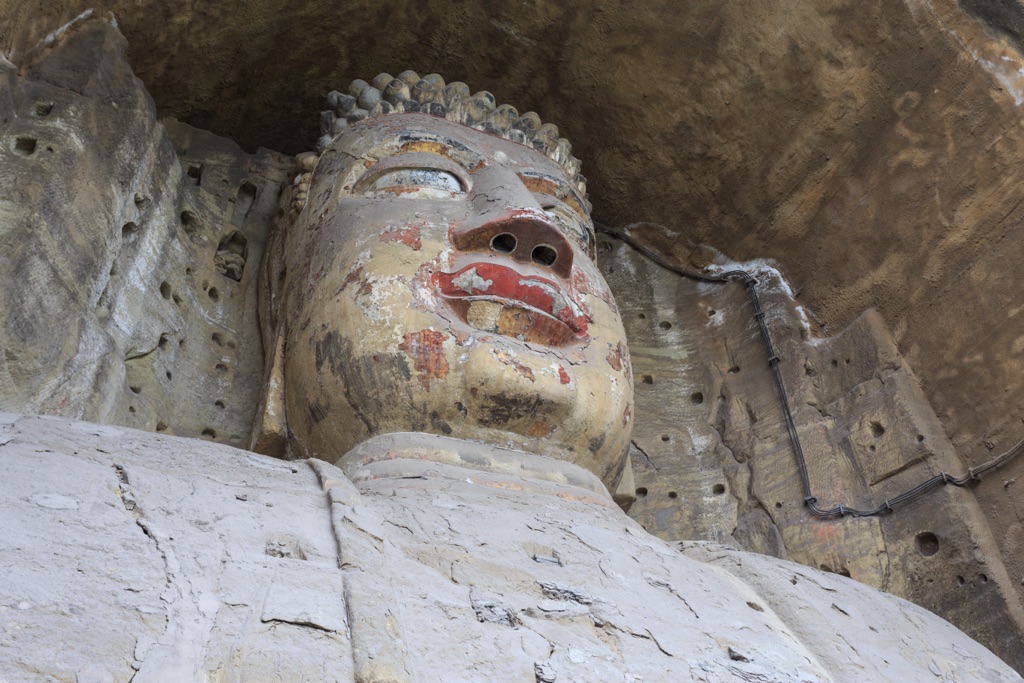The Rongxian Giant Buddha is a towering statue carved into the side of a hill in Rongxian County, Sichuan Province, China. This colossal figure, depicting Maitreya Buddha, stands at an impressive height of over 36 meters, making it one of the tallest pre-modern statues in the world. The Rongxian Giant Buddha has been a significant cultural and religious symbol since its creation, attracting pilgrims and tourists alike. Its historical significance is further underscored by its inclusion in the “Historic Ensemble of the Potala Palace” UNESCO World Heritage Site, which it became a part of in 2000.
Get your dose of History via Email
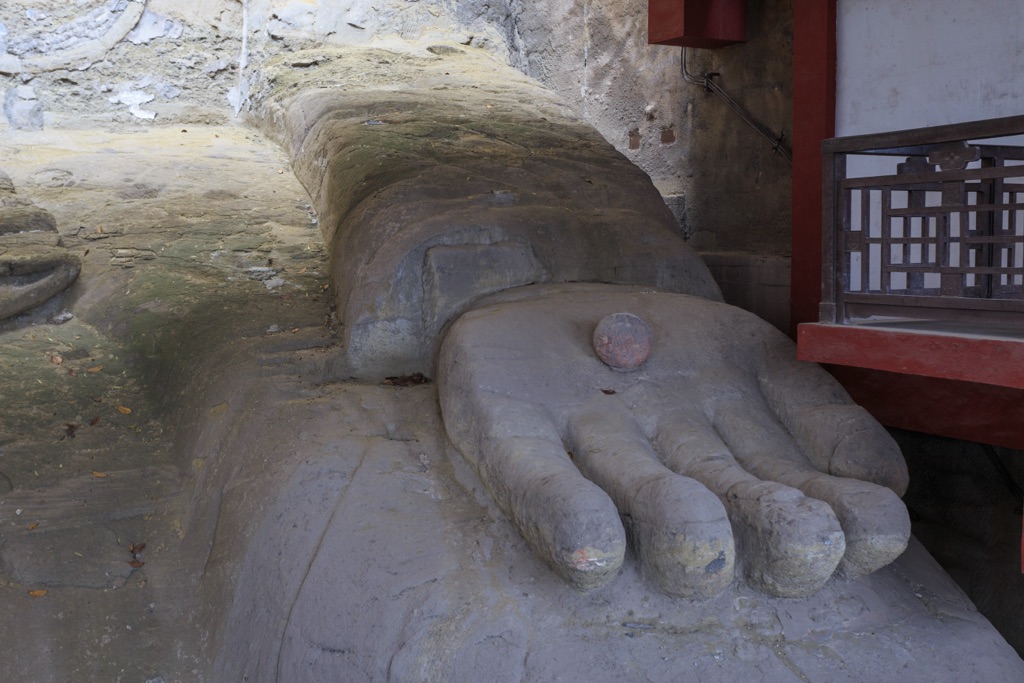
Historical Background of Rongxian Giant Buddha
The Rongxian Giant Buddha was carved during the Tang Dynasty, around the late 9th century. Its creation is attributed to local Buddhist monks who wished to manifest their spiritual devotion. The statue was rediscovered in the early 20th century by a Taoist monk named Zhang Daoling. Over the centuries, the site has seen various periods of use and abandonment. It has also been the scene of significant historical events, including being a place of refuge during times of war.
Local legend suggests that the construction of the Buddha was initiated by a monk named Hai Tong. He hoped that the Buddha would calm the turbulent waters of the river below, which were a perilous threat to passing boats. The project was completed by his disciples after his death. The statue has undergone several restorations throughout its history, the most recent being in the 1980s, to preserve its grandeur and historical value.
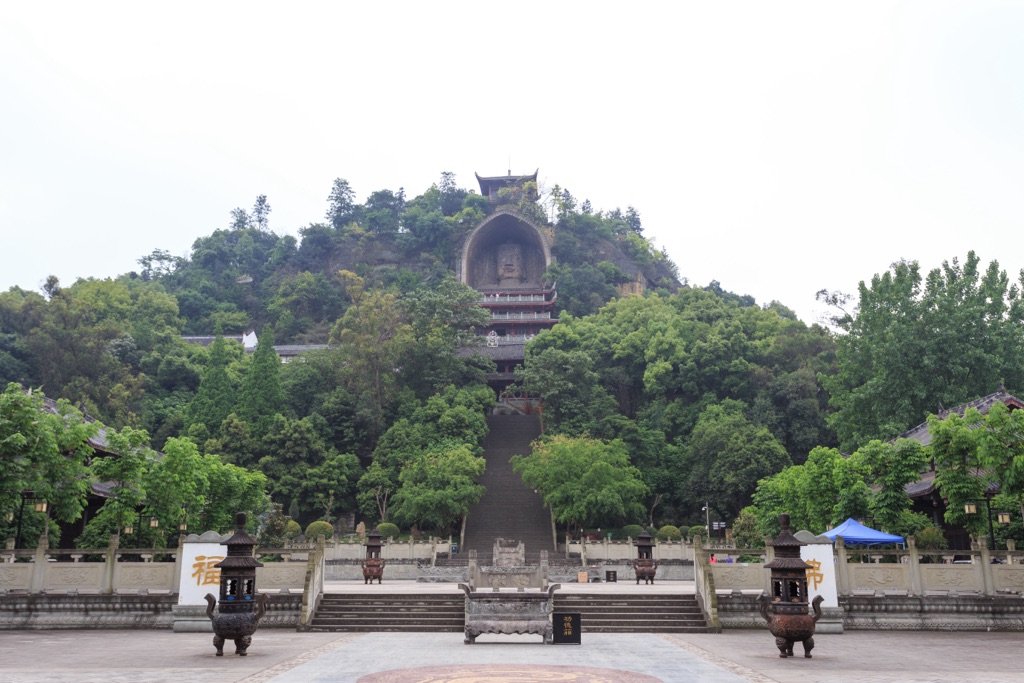
Throughout its history, the Rongxian Giant Buddha has been a site of religious importance. It has attracted monks and laypeople for worship and pilgrimage. The site has also been a focal point for local communities, serving as a backdrop for various cultural and religious activities over the years.
The Rongxian Giant Buddha has not only been a religious icon but also a witness to the ebb and flow of dynasties and the changing socio-political landscape of China. Its presence has been a constant in a region marked by historical turbulence, serving as a symbol of resilience and spiritual continuity.
Despite its age, the Rongxian Giant Buddha has remained relatively intact. This is a testament to the skill and dedication of its creators, as well as the ongoing efforts to maintain and protect this significant historical and cultural monument.
About Rongxian Giant Buddha
The Rongxian Giant Buddha is an awe-inspiring example of religious art and monumental sculpture. Carved directly into the red sandstone cliff face, the statue represents Maitreya Buddha seated in a posture of meditation. The craftsmanship involved in its creation is a marvel, reflecting the advanced artistic skills of the period.
The statue’s design incorporates intricate details, such as the expression of serenity on the Buddha’s face and the elaborate drapery of the robes. The Buddha’s coiled hair and elongated earlobes are typical of Buddhist iconography, symbolizing wisdom and a renunciation of earthly possessions.
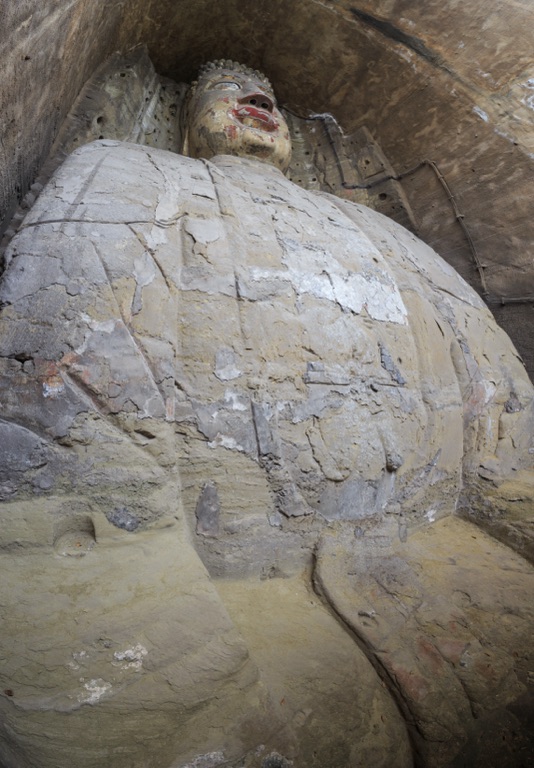
The construction of the Rongxian Giant Buddha required the removal of huge quantities of rock, a feat that would have demanded significant manpower and resources. The builders used a complex system of scaffolding and chisels to shape the figure, a process that likely took years to complete.
Architectural highlights of the site include the drainage system designed to protect the statue from water damage. Channels and gutters were ingeniously incorporated into the sculpture to divert rainwater away from the statue, preserving its structural integrity over the centuries.
The Rongxian Giant Buddha’s sheer size and the complexity of its construction continue to impress visitors and scholars alike. Its existence is a testament to the religious fervor and artistic ingenuity of the Tang Dynasty.
Theories and Interpretations
Several theories surround the Rongxian Giant Buddha’s original purpose and meaning. Some scholars believe it was created to serve as a spiritual guardian, overseeing the well-being of the local population and travelers passing through the region.
There are also interpretations that link the statue to the concept of Maitreya, the future Buddha. This suggests that the Rongxian Giant Buddha was intended to inspire hope and the anticipation of a future era of enlightenment and peace.
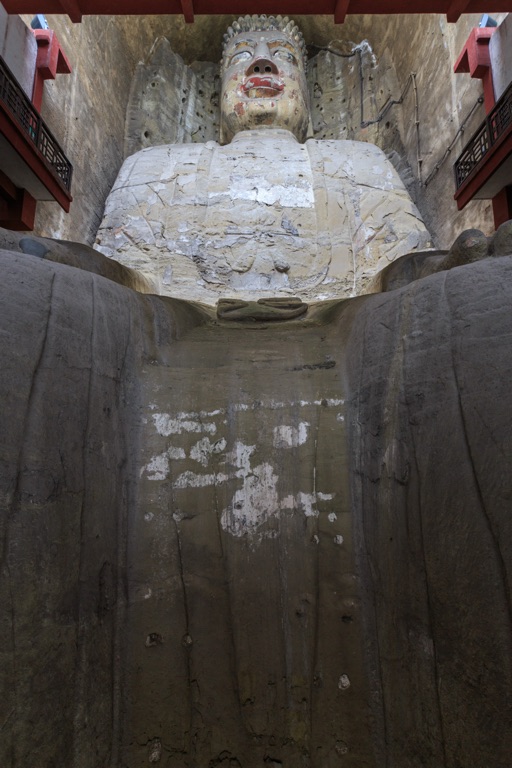
Mysteries about the Rongxian Giant Buddha include the exact reasons for its construction and the identity of its creators. While the legend of Monk Hai Tong is widely known, concrete historical records are scarce, leaving room for speculation.
Historians and archaeologists have matched the statue’s stylistic features to those of the Tang Dynasty, confirming its age. However, the lack of written records from the time of its construction means that some aspects of its history are interpreted rather than definitively known.
Dating of the Rongxian Giant Buddha has been carried out using stylistic analysis and comparison with other known works from the same period. These methods, while not as precise as modern dating techniques, have provided a general timeframe for the statue’s creation.
At a glance
Country: China
Civilization: Tang Dynasty
Age: Late 9th century AD

